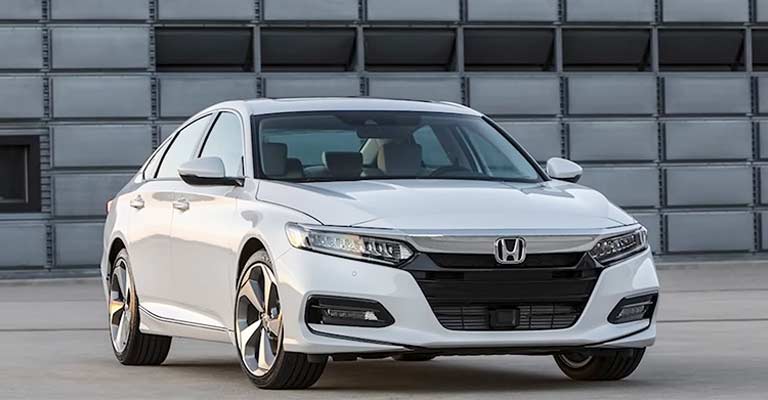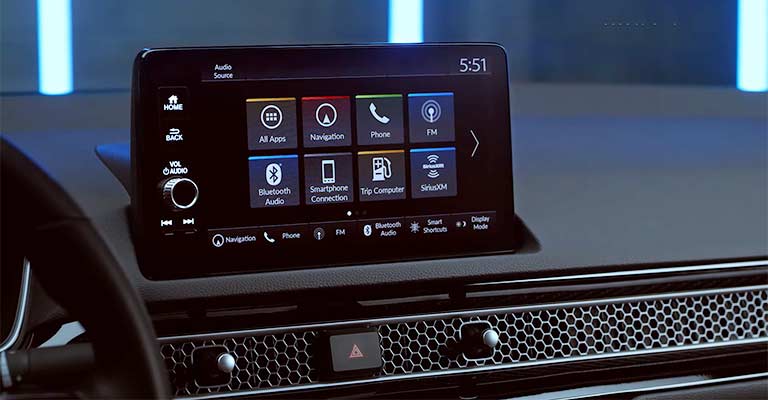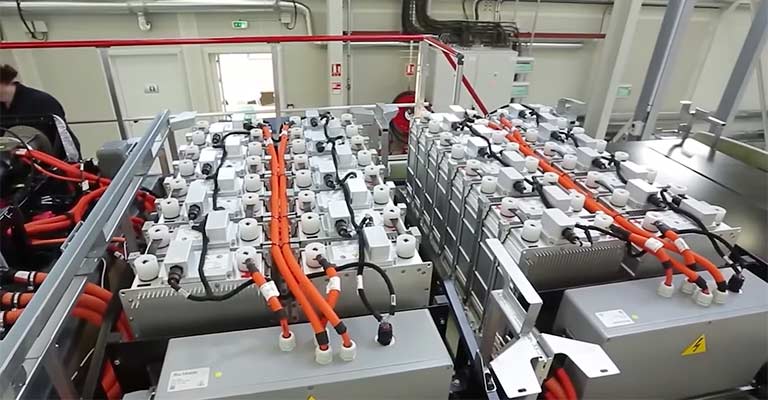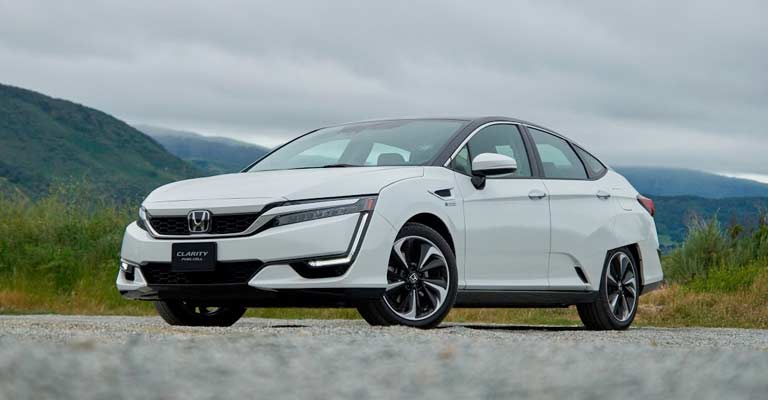Honda on Tuesday revealed two concept vehicles, dubbed the “Saloon” and “Space-Hub”.
The Japanese automaker says the Zero Series approach for EV development focuses on models that are “thin, light and wise,” with specific goals to minimize battery size and weight.
While electric vehicles are gaining the lion’s share of the attention for carbon-neutral technology at the 2024 Consumer Electronics Show (CES), hydrogen energy has snuck its way back into the conversation thanks to two automotive giants.
Beyond making vehicles powered by hydrogen-powered fuel cells, the South Korean automaker signaled that it could work toward aiding a “hydrogen society” by expanding into energy production, storage, and transportation.
Details below,

Honda Says, Hydrogen Fuel-Cell Cars Are ‘the Next Phase’ After Battery-Electric Vehicles
Hyundai spotlighted its plans for utilizing hydrogen energy at the sprawling tech and gadget show in Las Vegas.
It’s already technologically feasible, and it will eventually make sense economically, too, José Muñoz, president and global chief operating officer of Hyundai Motor Co, predicted on Monday.
Meanwhile, automotive supplier Bosch Mobility plans to launch its first hydrogen combustion engine this year – another key step toward reducing global man-made carbon emissions, the company said during its CES 2024 event.
Both Bosch and Hyundai say they’ve been encouraged to move forward with their respective initiatives because of investments such as the $7 billion (€6.4 billion) that the US government is pouring into the development of hydrogen infrastructure.
Hydrogen gas fuel tanks designed by Motul in conjunction with GCK Battery are seen in the back of a vehicle retrofitted with a hydrogen combustion engine at 2024 CES.
Kia, meanwhile, introduced a trio of electric vans that can quickly swap body modules from cargo haulers to taxis and other purposes. Production of the vans will begin in 2025 in South Korea.
And Vietnam-based electric upstart VinFast unveiled an electric truck concept. The mid-size truck is dubbed the VF Wild.
Tech EcoSystem Has Improved

Mercedes-Benz showed off updates to its infotainment systems, including a new AI-powered virtual assistant that strives to personalize interactions between drivers and their cars.
The update will connect the AI with functions for automated driving, seating comfort, data displays, and charging.
But while automakers like Mercedes-Benz are focusing on improving their proprietary in-car ecosystems, others are striking more partnerships with Google to pre-install apps such as Google Maps and Assistant in their vehicles, the tech giant revealed at CES 2024.
The Google built-in will come to select models from Nissan, Ford Motor’s luxury brand Lincoln, and others this year, with Porsche following suit in 2025. And even Mercedes-Benz is layering Google apps into its technology.
The Latest Solid State Batteries

Honda also touched on plans for its Zero Series and wider EV advances down the road – notably, the company’s independent development of solid-state batteries.
In a Tuesday news conference, the company’s Executive Vice President Shinji Aoyama said Honda aims to apply solid-state batteries to the Zero Series by the late 2020s. Solid-state batteries are widely believed to be essential for the mass commercialization of battery-powered EVs.
Today, lithium-ion batteries are more commonly used in EVs but are prone to fires. Solid-state batteries are more stable and potentially more powerful.
Honda Motor’s Mitsuru Kariya leads the research and development group behind the EV tech. On Tuesday, they explained that solid-state batteries have a higher energy density. They can be smaller and also maintain better range with efficient outputs.
It delivers highly efficient factors. Makes the EVs light. He also added, it also potentially improves fuel economy.
However, we also know that it’s not Honda only. A lot of other automakers have their eyes set on a solid-state battery future.
Let’s take Toyota for example. Recently Toyota agreed to work with Japanese oil company Idemitsu on solid-state battery production.
The Future of Solid-State Batteries
Honda and General Motors have been co-developing a next-level hydrogen energy carrier since 2013. The partnership went so strong that we have developed high expectations now
Both companies promoted double durability and talked about reducing the cost by one-third.
It is also common knowledge that, the next-generation fuel cell system leverages both automakers’ combined knowledge, know-how, and economies of scale.
Now, we have a more cost-effective solution. Honda plans to expand the energy system to power its green projects (FCEVs/Fuel Cell Electric vehicles) and commercial automobiles.
However, we are still to see some variations in design when the final CRV models arrive in 2024. It will have a few changes than the original ones.
In fact, it may not have the name CRV FCEV at all. We are hopeful to see the lithium-ion battery pack onboard, which can be easily packed and charged. It’s amazing, isn’t it?
The hybrid models point toward one of the biggest hurdles of hydrogen vehicles. It’s also the need for more fueling infrastructure.
Honda also is addressing the issues experienced with their previous hybrid. We are talking about the old Clarity Plug-in. The company is also improving and expanding its infrastructure.
Why Fuel Cell Cars Are Important?

Honda’s top executive, Inoue Katsushi, is responsible for the brand’s electrification strategies. He recently talked about the company’s motto.
Inoue anticipates a two-phase evolution in the automotive sector, with battery EVs leading the way. It was followed by a more powerful adoption of hydrogen fuel cell vehicles.
Katsushi asserts that the transition to fuel cells may take longer. However, the technology’s potential is promising, especially for vehicles like Heavy Goods Vehicles (HGVs).
The Japanese automaker has set an ambitious target. They aim for 100% of sales to comprise electric or hydrogen-powered vehicles by 2040.
However, we are still not sure of the exact proportion between these two technologies. It lies hidden under the company’s flexible approach towards the future of automotive power.
In a significant development, Honda has joined forces with Isuzu to create the ‘Giga Fuel Cell’ vehicle. The project is currently in its testing phase. It is expected to hit the market by 2027. Soon, it will mark a new chapter in Honda’s hydrogen journey.
Our Thoughts?
Honda’s commitment to hydrogen technology is not new. The company has been a pioneer in this field.
They are about to launch its first hydrogen vehicle, the FCX Clarity, as far back as 2008. This vehicle boasts an impressive 366-mile range and emits only water vapor. It underlines the environmental benefits of hydrogen fuel cell technology.
More recently, Honda has expanded its hydrogen vehicle lineup with a fuel-cell version of the current CR-V. It is developed in partnership with General Motors. It reinforces the company’s belief in the viability of fuel cell electric vehicles (FCEVs) as a mainstay in its global product offering.
However, Honda is not unaware of the challenges ahead. Katsushi noted that the slow sales of the original Clarity model were largely due to inadequate infrastructure and high costs.
Needlessly he remains optimistic about the future, particularly with Honda’s next-generation fuel cell technology. We believe they are to be more competitive and efficient.
Honda’s strategy also involves a broader application of hydrogen technology. The company envisions its fuel cells powering not just vehicles but also serving as stationary power stations and construction machinery.
It’s a holistic approach and aims to harness hydrogen’s potential in different sectors. It also contributes significantly to global decarbonization efforts.
Other automotive giants like Toyota and Hyundai are also shifting their focus towards hydrogen for commercial vehicles and industrial applications.
Toyota, for instance, has recently launched a fuel cell-powered version of its luxury Crown saloon in Japan. Meanwhile, Hyundai is determined to make hydrogen mainstream by 2040. The company aims to achieve price parity with battery electric vehicles within this decade.
Honda’s latest venture with GM further cements its commitment to hydrogen technology. The company plans to start producing a new hydrogen fuel cell system, co-developed with GM, this year.
With targets to reach annual sales of around 2,000 units in the mid-decade and escalate to 60,000 units by 2030, Honda is clearly gearing up for a hydrogen-powered future.
Honda’s vision for hydrogen fuel cells as the successor to battery EVs represents a significant shift in the automotive landscape. The company’s ongoing investments, partnerships, and innovative approaches in this domain underscore its commitment to leading the charge toward a sustainable, hydrogen-fuelled future.
It aligns with global decarbonization goals and promises to transform the way we think about mobility and energy use in the years to come.
Last Words
Countries and major industries are moving forward to rapidly expand the hydrogen refueling infrastructure to support the uptake of fuel cell vehicles.
Other brands are also investing in hydrogen to help decarbonize their companies. It includes Bosch, who said it would launch a combustion energy engine later this year.
Speaking at CES 2024, Tanja Rückert, Bosch board member, said: “To help us meet our future global energy needs in a more resource-efficient way, we at Bosch are rethinking energy use and focusing on a two-pronged approach: electrification and hydrogen.
For a low-emissions future, we are optimizing the use of traditional energy sources by driving forward electrification in mobility, commercial buildings, and homes. ”
What do you think the future holds for us? Let us know your opinion in the comments.

Leave a Reply